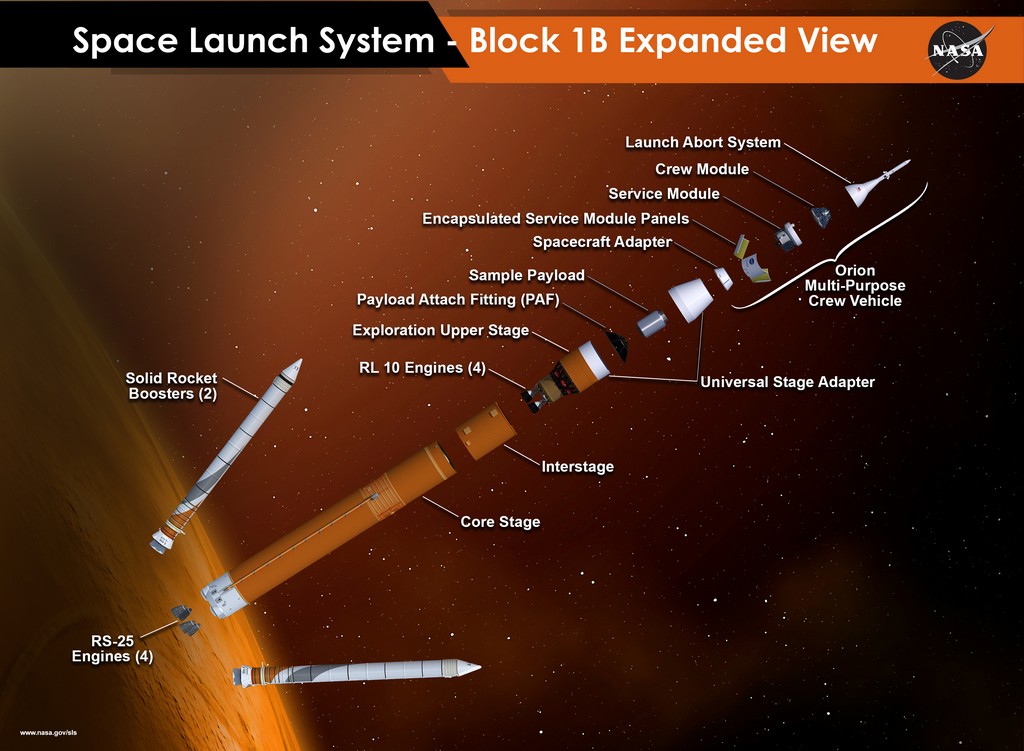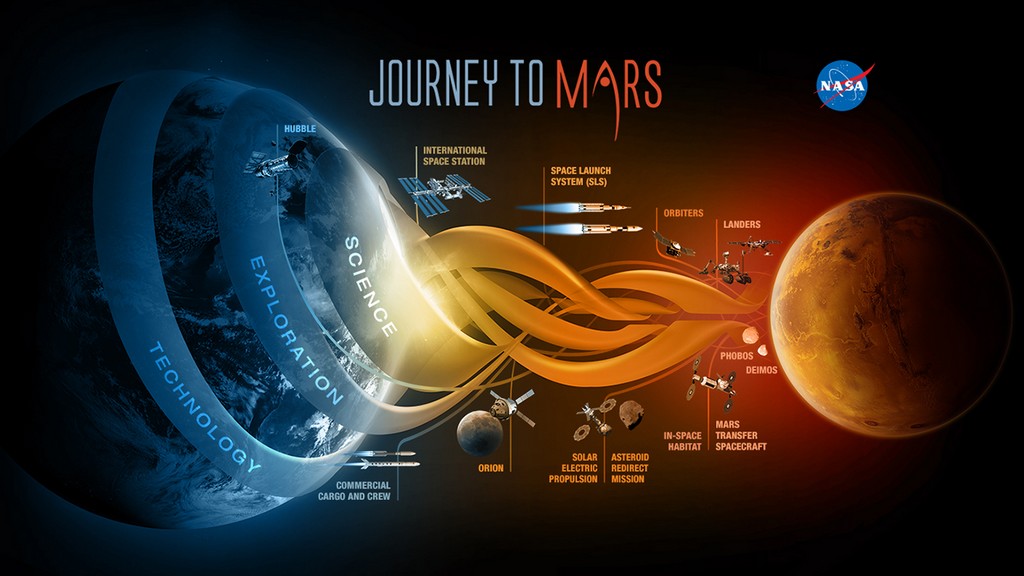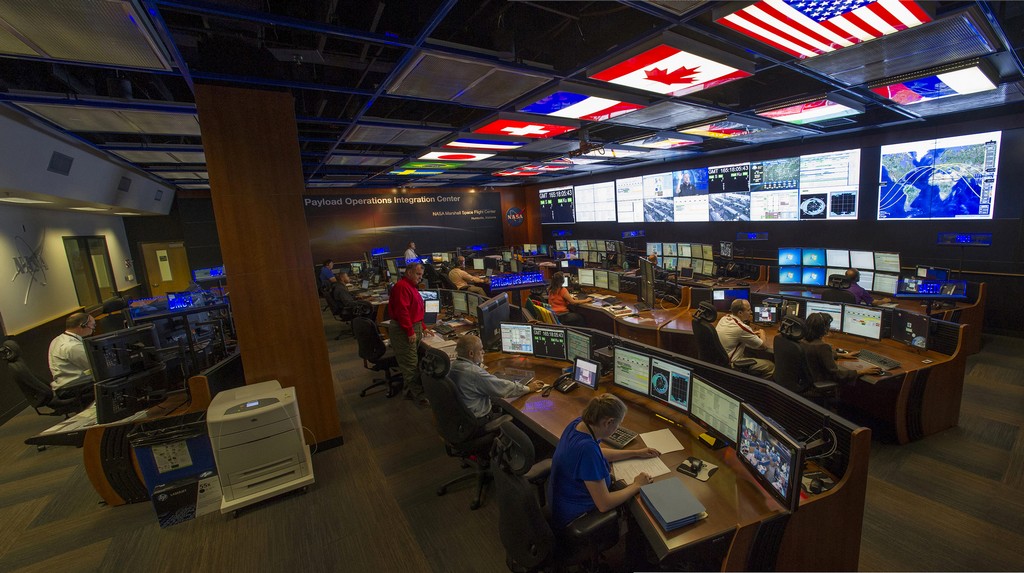Features
On September 28, 2007, then NASA administrator Michael D. Griffin shared that by 2057, “We should be celebrating 20 years of man on Mars.” Then, in October 2015, NASA published its official plan for human exploration and colonization of Mars, dubbing it “Journey to Mars.” The plan comprises three distinct phases to lead up to fully sustained colonization. It’s an ambitious and exciting project to send humans to the Red Planet, and Jeremy Caplan (San Diego State) is playing a crucial part in getting us there.
Jeremy Caplan first got involved with NASA during his senior year on campus. The Student Career Services office had recently launched an alumni mentorship program and the opportunity to network with someone in a similar field was enticing. However, as the program was still new, the number of potential mentors who were in Jeremy’s major of mechanical engineering were few. But then Jeremy saw several alumni listed from the aerospace engineering department who were currently employed by NASA. One of them, in fact, was an engineering manager for NASA’s Jet Propulsion Laboratory in Pasadena, California, JPL is, of course, the home of some of modern history’s most famous scientific achievements in space exploration, including the Mars Pathfinder and Mars Rover missions.
Jeremy went with that particular mentor, and at the end of the formal mentorship he was recommended to some colleagues for placement in JPL’s summer internship program. After being selected he spent 10 weeks in the summer of 2014 at JPL working on a host of projects. “During my internship, I gained valuable experience in the engineering workplace in addition to an undying urge to work on space projects,” said Jeremy. But where to next?
“The most rewarding part of my job is knowing that I am contributing to a project that will inspire generations for years to come."
The answer was another historic location for space exploration in Huntsville, Alabama, to work with Boeing at NASA’s Marshall Space Flight Center. The Marshall Space Flight Center is NASA’s largest center and was instrumental in developing the Saturn launch vehicles for the Apollo program. It is also NASA’s lead center for Space Shuttle propulsion, payloads and crew training, International Space Station design, and information management. If NASA is sending someone or something into space, the project has likely passed through the doors of the Marshall Space Flight Center at some point.
Jeremy’s work with Boeing is now focused on NASA’s next generation of heavy-lift launch vehicles being designed and tested there, named the Space Launch System (SLS), with Boeing as the prime contractor for the project. “The goal of SLS is to restore an American launch capability that will allow humans and heavy payloads to reach beyond low-earth orbit destinations,” Jeremy says of the program. “SLS will take us to a variety of destinations including, but not limited to: the Moon, Europa, various asteroids, and eventually Mars. SLS is a major piece of NASA’s campaign for human exploration of Mars.”

NASA’s next generation of heavy-lift launch vehicles being designed and tested is the Space Launch System (SLS).“The goal of SLS is to restore an American launch capability that will allow humans and heavy payloads to reach beyond low-earth orbit destinations," Jeremy says of the program. “SLS will take us to a variety of destinations including, but not limited to: the Moon, Europa, various asteroids, and eventually Mars. SLS is a major piece of NASA’s campaign for human exploration of Mars.”
It’s definitely no small feat. The SLS will launch NASA’s new Orion spacecraft to these far-flung destinations while offering the highest-ever payload mass, volume capability, and energy to send missions through space. As part of this milestone project, in 2015, NASA completed the critical design review for the SLS, a first for a NASA exploration-class vehicle in almost 40 years.

The SLS plays a pivotol role in NASA's plans for manned exploration of Mars.
Jeremy’s role is as a mechanical design engineer on the Exploration Upper Stage (EUS) of the SLS. The EUS is the second stage of the rocket and will thrust the Orion spacecraft to its intended destination after separation of the core stage occurs. More specifically, Jeremy is working on the Dry Structures Design team which encompasses all the structures that do not interact with the onboard liquid propellants. But it’s not going to be an easy road to the end of the project. “The most daunting task ahead of the EUS team is our extremely aggressive schedule for the entire year of 2017,” says Jeremy. “We have just successfully completed our Preliminary Design Review (PDR) with NASA and are now moving towards the Critical Design Review (CDR) which will take place this fall. During CDR, we will be expected to present our customer (NASA) with a completed design for EUS that will be ready for production.” The expectations for CDR are extremely high. Any errors or incomplete design work will be costly in both money and reputation.
While the demand for STEM jobs was predicted to increase by 18.7% from 2010 to 2020, the United States is struggling to fill the gap with only 36% of all high school graduates ready to take a college-level science course.
But with great effort comes great pride, especially with a special project like this. “The most rewarding part of my job is knowing that I am contributing to a project that will inspire generations for years to come,” Jeremy says. “It is also amazing to know that the work that I do will have a major and tangible impact on the world.”
And that sort of work is something that the United States is continuing to focus on as efforts launch across the nation to encourage students to pursue science, technology, engineering and mathmatics (STEM) majors. While the demand for STEM jobs was predicted to increase by 18.7% from 2010 to 2020, the United States is struggling to fill the gap with only 36% of all high school graduates ready to take a college-level science course and the U.S. ranking 27th in math compared to 34 other countries.
But Jeremy has some advice for current STEM majors who are excited about what the future holds for them. He suggests that the sooner a student can secure an internship, the better. The early work experience makes a student’s search for their first full-time position immensely easier. The additional benefit is the ability to understand first-hand what the day-to-day life is like in a student’s chosen career path. Of course he also recommends what launched his journey: a mentor. “I am a huge advocate of mentorships,” he says. “I encourage all STEM majors to have at least one mentor who is currently working within a STEM industry.”
Being involved with a student organization can also help develop a student’s experiences to prepare them for success. It should come as no surprise that Jeremy recommends an organization familiar to most readers as one of the country’s premier men’s fraternities focused on developing ethical leaders: Sigma Nu.

Mission Control at the Marshal Space Flight Center in Huntsville, Ala.
“I attribute a great deal of my personal growth in college to my involvement with Sigma Nu,” Jeremy says of his undergraduate years as a member of the Legion of Honor. “When I became the Commander of my chapter, I gained extremely valuable leadership experience, and it provided me with the confidence to step outside of my comfort zone in other aspects of my life, such as my academic career.” His fraternal experience also helped him develop those critical networking skills that helped him navigate the transition from school to the workplace.
“I didn’t always know what I wanted to do, but I always knew I wanted to do things that were as big and meaningful as possible,” Jeremy says as he reflects on where this great journey has taken him thus far.
The last time a manned space mission traveled into space towards another celestial body was Apollo 17. NASA Astronauts Eugene Cernan and Harrison Schmitt took the honors of being the last humans to walk across the surface of the Moon, but orbiting above them was the Command Module piloted by alumnus Ronald Evans (Kansas). When the crew left the Moon, they symbolically dog-eared the last page in the history book of manned space exploration. But that book is being picked up again, and it’s fitting that just as a Sigma Nu closed it temporarily, another Sigma Nu is helping to open it and re-launch the eternal and mesmerizing wanderlust that comes to humanity when they gaze up into the stars at night.
It’s hard to find something bigger than that.